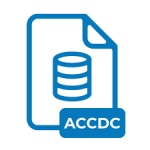.SQLITE File Extension

SQLite Database
| Developer | SQLite |
| Popularity | |
| Category | Database Files |
| Format | .SQLITE |
| Cross Platform | Update Soon |
What is an SQLITE file?
In the realm of databases, SQLite stands out as a popular choice due to its lightweight nature, ease of use, and versatility. At the heart of SQLite lies its file extension, .sqlite, which houses the structured data in a single, portable file.
This article delves into the origins, structure, advantages, disadvantages, and methods of accessing SQLite databases across various platforms.
More Information.
Initially released in 2000, SQLite was designed with a focus on simplicity, reliability, and efficiency. Its primary purpose was to serve as a backend database engine for applications, particularly those requiring a lightweight and portable solution.
Over the years, SQLite has evolved into one of the most widely deployed database engines, powering countless applications ranging from web browsers and mobile devices to desktop software and embedded systems.
Origin Of This File.
SQLite traces its roots back to the early 2000s when D. Richard Hipp developed it as a self-contained, serverless, zero-configuration, transactional SQL database engine.
Its inception stemmed from the need for a simple, embedded database library that could be seamlessly integrated into various applications without requiring a separate server process.
File Structure Technical Specification.
The .sqlite file extension signifies a SQLite database file. Internally, a SQLite database comprises multiple components, including tables, indexes, triggers, and views, all organized within a single file.
Despite its simplicity, SQLite databases adhere to a well-defined schema and utilize a variant of SQL (Structured Query Language) for data manipulation and retrieval.
At its core, a SQLite database file consists of various data pages, each containing a header and a payload section.
The header stores metadata such as the schema version, page size, and encoding format, while the payload section houses the actual data and index entries. Additionally, SQLite employs a B-tree data structure to efficiently manage and access data within the database file.
How to Convert the File?
Converting SQLite database files to other formats or migrating data to different database management systems can be achieved using various tools and techniques. Some common methods include:
- Exporting to SQL Script: SQLite provides built-in commands such as
.dumpto generate SQL scripts representing the database schema and data, which can then be imported into other database systems. - Using Third-Party Conversion Tools: Several third-party tools offer capabilities for converting SQLite databases to formats such as CSV, XML, JSON, or other SQL dialects.
- Manual Conversion: For more complex conversions or customized requirements, manual extraction and transformation of data may be necessary, leveraging programming languages such as Python or Java.
Advantages And Disadvantages.
Advantage:
- Portability: SQLite databases are self-contained and can be easily transferred across different platforms without any modifications.
- Zero Configuration: Unlike traditional database systems, SQLite does not require any setup or administration, making it ideal for embedded applications and small-scale projects.
- Transactional Support: SQLite supports ACID (Atomicity, Consistency, Isolation, Durability) transactions, ensuring data integrity and reliability.
- Small Footprint: The SQLite library is compact in size, making it suitable for environments with limited resources, such as mobile devices and IoT devices.
Disadvantage:
- Concurrency: While SQLite supports concurrent read access, it has limited support for concurrent write access, which can lead to performance bottlenecks in high-traffic applications.
- Scalability: Due to its file-based architecture, SQLite may struggle to scale efficiently in scenarios involving large datasets or concurrent write operations.
- Lack of Client-Server Architecture: Unlike client-server database systems, SQLite operates in-process, which may not be suitable for applications requiring centralized data management and multi-user access.
How to Open SQLITE?
Open In Windows
Various SQLite database management tools such as DB Browser for SQLite, SQLiteStudio, or SQLiteSpy are available for Windows users to view and manipulate SQLite databases.
Open In Linux
On Linux systems, SQLite databases can be accessed using command-line tools like sqlite3 or through GUI applications like SQLite Browser.
Open In MAC
Similar to Linux, macOS users can utilize command-line tools or graphical interfaces like DB Browser for SQLite to work with SQLite databases.
Open In Android
Android applications can interact with SQLite databases using the SQLiteOpenHelper class or third-party libraries like Room Persistence Library, which provide higher-level abstractions for database operations.
Open In IOS
iOS developers can leverage the CoreData framework or directly use the SQLite library to manage SQLite databases within their applications.
Open in Others
Apart from the mentioned platforms, SQLite databases can also be accessed on other operating systems such as BSD, Solaris, and various embedded systems using compatible SQLite libraries or tools.













